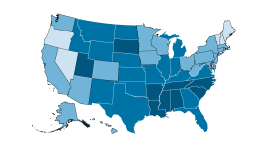

Public Trust in Government: 1958-2025
While trust in government has been low for decades, the current measure is one of the lowest in the nearly seven decades since the question was first asked by the National Election Study, and it is lower than it was last year (22%).
Latest Publications
-
Public Trust in Government: 1958-2025
While trust in government has been low for decades, the current measure is one of the lowest in the nearly seven decades since the question was first asked by the National Election Study, and it is lower than it was last year (22%).
Most Popular
Politics & Policy

A Year Ahead of the Midterms, Americans’ Dim Views of Both Parties
Democrats’ frustration with their own party is up sharply, as many say it hasn’t pushed back hard enough against Trump and the GOP. In contrast, 40% of Republicans say they are frustrated with their party.
Features
Artificial Intelligence

Republicans, Democrats now equally concerned about AI in daily life, but views on regulation differ
Overall, 44% of U.S. adults say they trust the U.S. a lot or some to regulate the use of AI effectively, while 47% have little to no trust in the U.S. to do this.

What we know about energy use at U.S. data centers amid the AI boom
Data centers accounted for 4% of total U.S. electricity use in 2024. Their energy demand is expected to more than double by 2030.

How People Around the World View AI
Most adults across 25 countries are aware of AI, and people are generally more concerned than excited about its effects on daily life.

About 1 in 5 U.S. workers now use AI in their job, up since last year
Workers younger than 50 and workers with a bachelor’s degree or more education are among the most likely to use AI in their job.

How Americans View AI and Its Impact on People and Society
Americans are worried about using AI more in daily life, seeing harm to human creativity and relationships. But they’re open to AI use in weather forecasting, medicine and other data-heavy tasks.
Religion
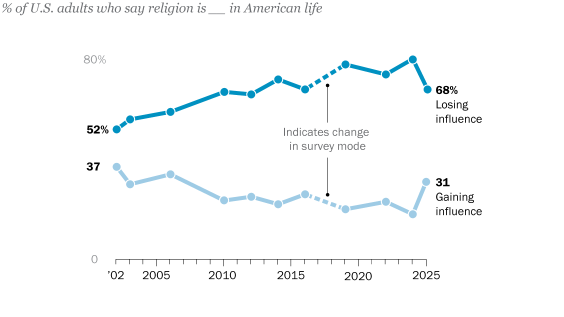
Growing Share of U.S. Adults Say Religion Is Gaining Influence in American Life
Americans’ views of religion’s role in society have grown more positive in recent years. But many feel their religious beliefs conflict with the mainstream.

If the U.S. had 100 people: Charting Americans’ religious affiliations
If the U.S. had 100 people, 62 would be Christians, including 40 Protestants, 19 Catholics, two Latter-day Saints and two who identify with other Christian groups.

Key facts about Black Americans and religion
Most Black Americans are Christian, though the share who identify as such has fallen since 2007.

Religiousness varies a lot by race among Democrats, relatively little among Republicans
In general, U.S. adults who are Republican or lean toward the GOP are more religious than Democrats and Democratic leaners.
News Habits & Media

Americans are following the news less closely than they used to
In 2016, 51% of U.S. adults said they followed the news all or most of the time, but that share fell to 36% in 2025.

More Americans prefer to watch the news than read or listen to it
A majority of Americans who prefer to watch the news (62%) say they prefer to get it from TV, rather than another platform.

News Influencers Fact Sheet
About one-in-five U.S. adults say they regularly get news from news influencers on social media, and this is especially common among younger adults.
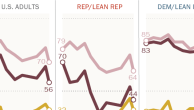
How Americans’ trust in information from news organizations and social media sites has changed over time
Overall, 56% of U.S. adults now say they have a lot of or some trust in the information they get from national news organizations – down 11 percentage points since March 2025.
Our Methods
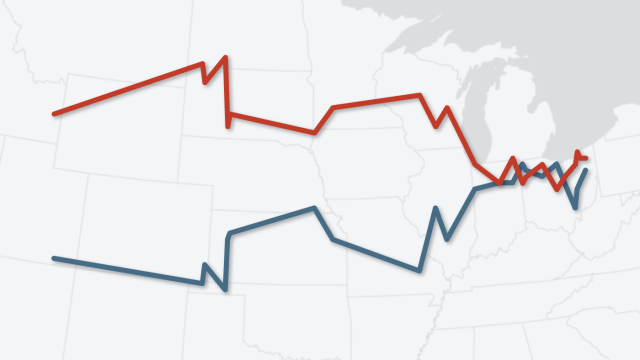
U.S. Surveys
Pew Research Center has deep roots in U.S. public opinion research. Launched as a project focused primarily on U.S. policy and politics in the early 1990s, the Center has grown over time to study a wide range of topics vital to explaining America to itself and to the world.
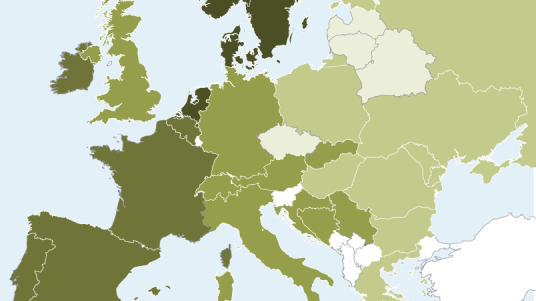
International Surveys
Pew Research Center regularly conducts public opinion surveys in countries outside the United States as part of its ongoing exploration of attitudes, values and behaviors around the globe.
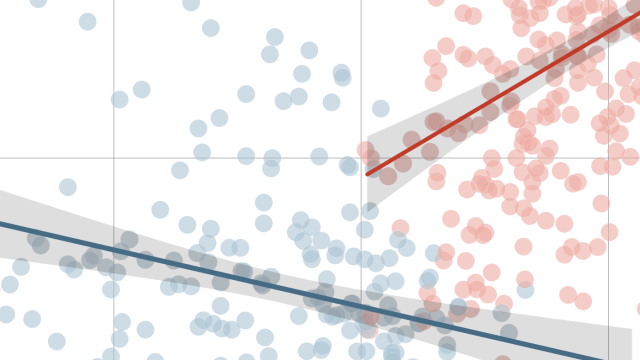
Data Science
Pew Research Center’s Data Labs uses computational methods to complement and expand on the Center’s existing research agenda.
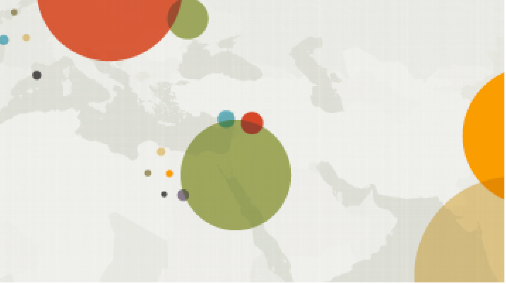
Demographic Research
Pew Research Center tracks social, demographic and economic trends, both domestically and internationally.
Our Experts
“A record 23 million Asian Americans trace their roots to more than 20 countries … and the U.S. Asian population is projected to reach 46 million by 2060.”
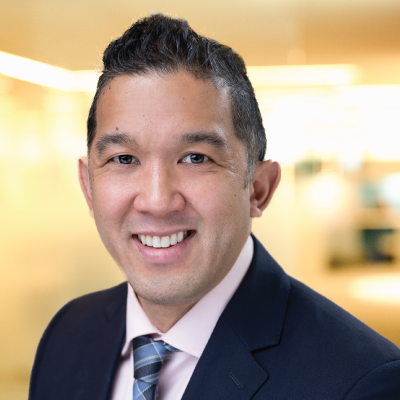
Neil G. Ruiz,
Head of New Research Initiatives
Methods 101 Videos

Video: Why have polls underestimated Donald Trump?
We’re in an era where the people most likely to respond to a poll are also the most likely to vote Democratic for president. Pew Research Center’s head methodologist Courtney Kennedy explains how pollsters are tackling this challenge to make samples as representative as possible.
Signature Reports
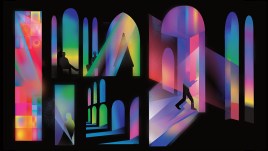
Decline of Christianity in the U.S. Has Slowed, May Have Leveled Off
America’s News Influencers
Race and LGBTQ Issues in K-12 Schools
Representative Democracy Remains a Popular Ideal, but People Around the World Are Critical of How It’s Working
Americans’ Dismal Views of the Nation’s Politics
Measuring Religion in China
Editor’s Pick

8 facts about divorce in the United States
Navigate with a compass? Fix a car engine? What Americans say they can (and can’t) do
Americans increasingly see legal sports betting as a bad thing for society and sports
Americans view Trump, Vance and congressional leaders in both parties more negatively than positively
Same-Sex Parents Raising Kids
How the Global Religious Landscape Changed From 2010 to 2020
Immigration & Migration

Key facts about U.S. Latinos
U.S. Unauthorized Immigrant Population Reached a Record 14 Million in 2023
What the data says about immigrants in the U.S.
Americans Have Mixed to Negative Views of Trump Administration Immigration Actions
Trump’s executive order on birthright citizenship draws more disapproval than approval
International Affairs












